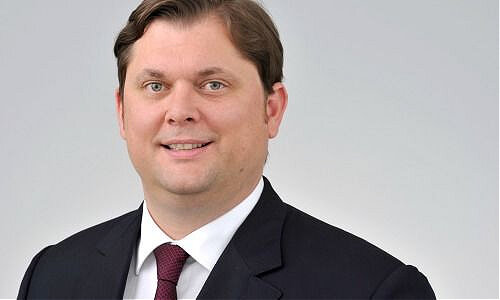David Solo's Role in Credit Suisse's Fund Debacle
With Lex Greensill, David Solo lost his Midas touch. finews.asia on how the secretive former GAM boss’ «liaisons dangereuses» led to chaos for Credit Suisse.
The episode represents a rare misstep for David Solo: one of the most influential (and elusive) figures in Swiss banking of the past three decades, Solo plowed money into and sat on an advisory board of Greensill, which applied for insolvency in the U.K. on Monday.
The 55-year-old banker had a hand in a $10.1 billion debacle unfolding at Credit Suisse’s fund arm. It is unclear what the Swiss bank can recoup for investors as Greensill, the supply chain empire which co-managed the money, teeters.
Lex Greensill Meets Credit Suisse
Solo vanished after leaving GAM in 2014 but kept busy behind the scenes: he devoted more time to a San Francisco-based quantitative asset manager he co-founded in 2004 (sold last year to Blackstone). He returned to his computer science roots too, writing algorithms for another quant-based start-up, Simag, in Switzerland.
The American-Swiss dual national also remained inextricably linked to GAM: the year after he left, he carried the flag for supply chain financing. Solo introduced Lex Greensill (pictured below) to the Swiss boutique in 2015, as finews.asia reported three years ago.

(Image: Greensill Capital)
Vested Interest in Greensill
A former protège of Marcel Ospel, Solo had a vested interest in Greensill's success: he was an investor in its Australian parent through a holding company, according to regulatory filings from 2016.
As GAM’s Tim Haywood began buying Greensill securities, Solo had an idea for more growth: he approached Michel Degen (pictured below), according to a person familiar briefed on the situation. An influential fixed-income executive at Credit Suisse, Degen already knew Solo through Simag, the joint venture the bank and Zurich’s prestigious technical university ETH were in the process of setting up.
Through a Greensill spokesman, Solo said his only role at Greensill was to advise on mergers and acquisitions. «David was not involved in the establishment or oversight of the Credit Suisse fund partnerships.» A spokeswoman for the bank didn't comment.

With debt investors starved for yield amid low- and negative interest rates, Credit Suisse bit: the Swiss bank agreed to co-manage a line of funds with Greensill early in 2017. By 2018, Credit Suisse had already raised $2 billion for Greensill funds, after pioneering the theme.
Where other banks were looking at hedge funds or private equity as alternative investments, the Swiss bank was looking at alternative fixed income styles – and Lex Greensill’s supply chain fit the bill.
GAM Liquidates
Around the same time, the first sign of trouble surfaced at GAM: Haywood’s funds were steeped in exposure, via Greensill, to steel tycoon Sanjeev Gupta, as finews.com reported. Reeling, the Swiss firm suspended Haywood and later began liquidating the $7.1 billion line of absolute-return funds.
A long-time exclusive partner of GAM’s, Atlanticomnium, turned down the asset manager when it was looking to offload the absolute-return assets, according to a person familiar with the matter. The Geneva-based firm didn't respond to a request for comment.
Striking Similarity
Just as GAM was shopping the Greensill assets around, Credit Suisse was ratcheting up, as finews.asia reported on Monday. While there is little evidence that the Swiss bank bought assets directly from GAM’s liquidation, finews.asia found at least one case where a Greensill-backed bond likely turned up in the Swiss bank's fast-growing supply chain funds.
A bond with the same maturity and size – down to the dollar – appeared first in GAM’s absolute-return fund early in 2018, then later the same year in one of Credit Suisse’s supply chain funds. Barring specific security identification numbers, it is as conclusive a case of Greensill products moving from GAM to Credit Suisse as can be made with publicly available data.
Higher Stakes
Behind the scenes, Solo is the common denominator between Greensill, GAM, and Credit Suisse. Solo, who wielded enormous influence (and amassed considerable personal wealth) between 1992 and 2014 during stints at UBS, Julius Baer, and GAM, stumbled over his backing of Lex Greensill.
For Credit Suisse, this now means a nightmarish unwind of the Greensill assets, the tricky decision on whether to compensate investors for losses – and a reputational wipeout for doubling down with Greensill as well its founder, with entanglements in wealth management and asset management, besides the fund ties.
GAM took nearly a year to return investors’ money – which it did in its entirety. The supply chain blow-up at Credit Suisse has far higher stakes: Sanjeev Gupta is negotiating a debt reprieve with Greensill in a bid to avert insolvency of GFG, the firm he controls, «Bloomberg» (behind paywall) reported on Tuesday. GFG employs roughly 35,000 people. Greensill employs another 1,000 people.
Reporting by Katharina Bart and Samuel Gerber





















